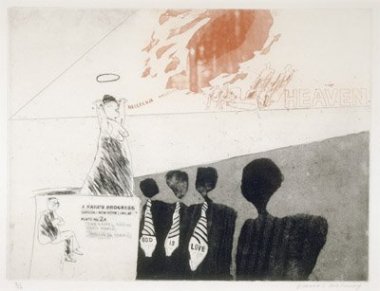Good People by David Foster Wallace is interesting for two reasons. The first being that it deals with abortion with characters that are normally stereotyped as vicious anti-abortion protestors. The second reason it is is interesting is because of how it stylistically portrays the nervousness of making an extremely difficult decision. At times it seems like the story just becomes a character’s inner ramblings and is trying to say too much at once but what I found is that a decision like this can’t really be flat-out described. The best we could do is to get a feeling for what these characters (specifically Lane Dean) are thinking, which in truth is a mess of jumbled and confused thoughts that are moving along at a rapid almost uncontrollable speed.
I can’t possibly imagine what it is like to be in this couples shoes. They are both obviously christian but no matter what religion you belong to, the decision is always hard. There is one truth that no one in the abortion debate seems to want to acknowledge and it is that we have no real idea when it comes to how fetuses “feel”, “think”, or generally how alive they are when they are aborted. I mean sure, people have what they think on both sides of the argument (and both a definition of “alive”) but in the end we don’t truly know. That is why it disappoints me to see that both sides of the abortion debate seem to lean towards more of the extremist insane approach rather than the intelligent discussion approach. Here however, we get a look into a real life situation, the story has no agenda. It simply asks you to define Lane and Sheri on your own terms. Are they good people?
The only disappointing factor of the story is that it probably could have been more interesting and maybe even more challenging if written from the perspective of Sheri and not Lane. I would have loved to have read that. Still, what we have is an engaging and challenging approach to abortion, that gives us an idea what the decision itself is like.

Leave a comment